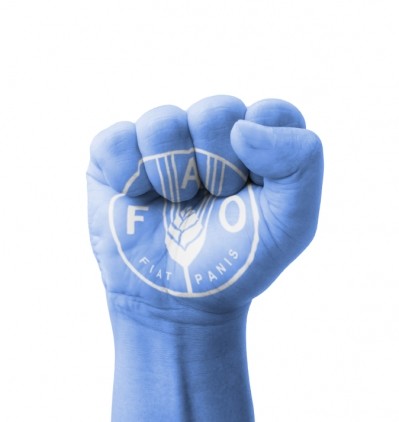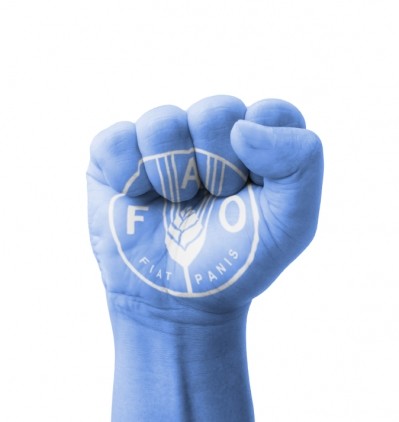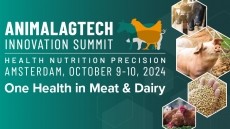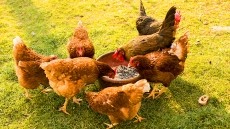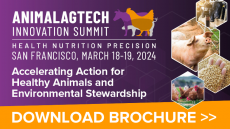WHO and FAO want feed industry data to help manage E.coli risk
!['A number of studies have suggested that diet and feed influence shedding on E.coli [in cattle]': Dr Sarah Cahill, FAO © istock.com/safety](/var/wrbm_gb_food_pharma/storage/images/_aliases/wrbm_large/5/3/2/0/3360235-1-eng-GB/WHO-and-FAO-want-feed-industry-data-to-help-manage-E.coli-risk.jpg)
The UN’s Food and Agriculture Organization (FAO) and the World Health Organization (WHO) work together on a microbiological risk assessment project (JEMRA).
In terms of pathogenic E. coli, Verotoxigenic Escherichia coli (VTEC) and Shigatoxigenic E. coli (STEC), the agencies said they want to address questions related to food attribution, identification and characterization of serovars of concern and approaches for monitoring.
The UN bodies said international feedback from the feed and food chain, policymakers, academia and other stakeholders is critical to ensure the information documents developed and advice provided reflects the global situation to the extent possible. The deadline for data submission is 17 June 2016.
"A number of studies have suggested that diet and feed influence shedding on E.coli and while we are not looking at interventions, at least in this phase of the project, we are interested in any monitoring programs that may have been implemented to look for these pathogens, also form a quality assurance perspective,“ Dr Sarah Cahill, food safety officer with the FAO’s Office of Food Safety, told FeedNavigator.
VTEC/STEC has been implicated in outbreaks of human disease via the cross-contamination of foods and direct contact with the feces of affected animals.
The global incidence of such pathogenic E. coli related disease has been estimated to be 2,801,000 acute illnesses, 3,890 cases of HUS, 270 cases of permanent ESRD, and 230 deaths annually (Majowicz et al., 2014).
Although many animal species, including pigs, horses and wild rabbits have tested positive for VTEC, colonized ruminants, especially cattle, are the major known reservoir and efforts to control excretion in these species are most likely to be beneficial, according to the literature.
Microbial pathogen risk in feed
There is a continuous risk for contamination of feed by microbial pathogens throughout the production chain up to feed, with the many opportunities for contamination making it difficult to control or fully eliminate specific pathogens, found the summary report of the joint FAO/WHO expert meeting on hazards associated with animal feed, in May last year in Rome.
“A key aspect of managing this risk is the identification and characterization of pathogens of concern in feed understanding, among other things, the factors that affect the sources, and routes of contamination.
“Salmonella has been identified as an important hazard and a wide spectrum of Salmonella serovars has been isolated from feed. This includes those most commonly isolated from clinical cases of human salmonellosis, like Typhimurium and Enteritidis.
“Other potential bacterial hazards in animal feed to be aware of, according to the feed type include Mycobacterium, Brucella, Clostridium spp, enterohaemorrhagic Escherichia coli, and Listeria. Parasites in pasture and forage have also been identified as potential hazards,” noted the authors of that report.
UK research on E. coli shedding in cattle
The goal of a UK Food Standards Agency (FSA) commissioned project, which kicked off in June 2014 and is set to run until June 2017, is to plug the gap on significant research on supershedding in cattle, which is said to be higher than normal counts of bacteria per gram of fecal matter, in order to facilitate the development of suitable intervention strategies for future control of E. coli 0157 on UK farms
Prior to that project, the FSA, in 2011, awarded a project to the Scottish Agricultural College to carry out a study to examine the feasibility of introducing on-farm controls to reduce E. coli O157 shedding in cattle.
The results of the study, published in 2013, identified three control strategies for which there was sufficient quantitative data. These were:
- The use of probiotics in feed;
- The vaccination of animals;
- And a combined package of eight biosecurity measures.
The results suggested that using vaccines or probiotics to control E. coli O157 could, in some circumstances, payback the costs. “However, this outcome is heavily dependent on the preventable human losses, especially the severity of human illnesses, and not just the number of cases prevented,” noted the FSA paper.
The FSA study found the majority of peer-reviewed work on this subject was dominated by North America publications. The literature review on the efficacy of control measures for reducing E. coli O157 shedding in livestock identified a total of 221 relevant scientific publications dating from 1990 to 2011.
The FSA said findings from a survey of farmers, carried out under the feasibility study, showed there is an awareness of the human health risks associated with E. coli O157, and recognition that farmers have a responsibility to address the issue, but the benefits are not currently obvious, and there is a reluctance to adopt any control measures that are not known to be efficacious and safe.
The authors also highlighted the lack of incentives for farmers to adopt controls; given the fact that E. coli O157 does not cause disease in livestock.


